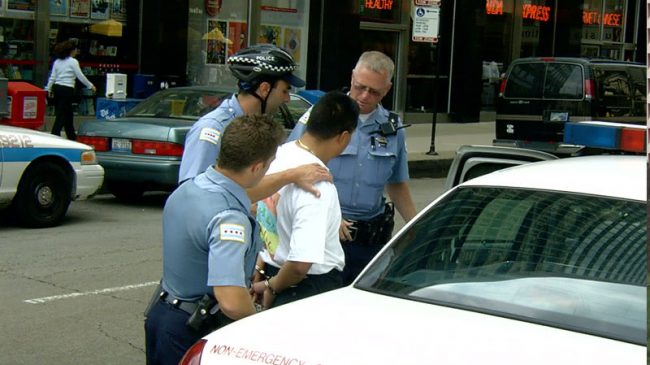With the recent news that Ferguson, Mo., police officer Darren Wilson won’t face charges for killing unarmed teenager Michael Brown, questions over law enforcement officers’ use of lethal force are getting national attention. But one state stands out as a leader in the use of lethal force by police officers – California.
According to the California Attorney General’s office, California’s violent crime rate in 2013 reached its lowest level since 1967. Despite that drop, the number of justifiable homicides committed by police officers in the state reached a record high of 132. That makes California cops responsible for more than 28 percent of the 461 justifiable homicides committed by law enforcement across the country in 2013, according to statistics published by the FBI.
Of those killed by police in California, the majority were between the ages of 18 and 29, and were killed either in their residences or on a street or sidewalk. “Felon attacked peace officer” is listed as the circumstance that led to the use of lethal force by police in roughly 79 percent of cases. In three cases, police used lethal force on someone who was resisting arrest.
Circumstances in which police are permitted to use lethal force are arguably subjective and largely determined by law enforcement themselves. For example, just a few weeks ago Los Angeles police fatally shot a man who was attempting to cut himself on a bus. According to police, he “acted aggressively” when they approached, so they opened fire and killed him.
Another troubling aspect surrounding police-involved homicides in California is the racial disparity. Despite only accounting for roughly 6.6 percent of California’s population, 18.2 percent of those fatally shot by police in 2013 were black. The plurality of those fatally shot by police – 38.6 percent – were Hispanic, while 37.9 percent were white.
So why, with California’s violent crime rate at it’s lowest point in four decades, is lethal force increasing among California’s law enforcement officers?
Some blame police culture itself. Back in 2005, former San Jose Police Chief Joseph McNamara wrote, “Simply put, the police culture in our country has changed. An emphasis on ‘officer safety’ and paramilitary training pervades today’s policing, in contrast to the older culture, which held that cops didn’t shoot until they were about to be shot or stabbed.”
When McNamara implemented measures like requiring officers to “walk the beat” and interact with community members on a regular basis, San Jose saw its crime rate drop significantly, despite having one of the smallest per capita police departments in the country.
Encouraging officers to regularly interact with the community they’re required to serve and protect may help reduce an “us vs. them” mentality that may fuel an officer’s quick response to shoot.
Another tool that may reduce the use of lethal force is officer-mounted body cameras.
Police departments in several California cities already use body cams and more should follow suit.
In Rialto, there was a 60 percent reduction in the total number of use-of-force incidents and an 88 percent reduction in the number of citizen complaints one year after the city’s police force started wearing body cams.
There’s no doubt that it is necessary for police to use lethal force in certain situations. But the truth of the matter is that police and citizens are safer today than ever before. Nationally, 27 police officers were killed by criminals in 2013 – nearly half the number of officers killed in 2012. Perhaps it’s time for police to reconsider some of their policies.
Police officers need to be able to protect themselves, but that need must be balanced against the fundamental duty of police, which is to serve and protect the citizens of California. The use of lethal force should be a last resort, not a first instinct.
Lauren Galik is director of criminal justice reform at Reason Foundation. This article originally appeared in The Press Enterprise.

